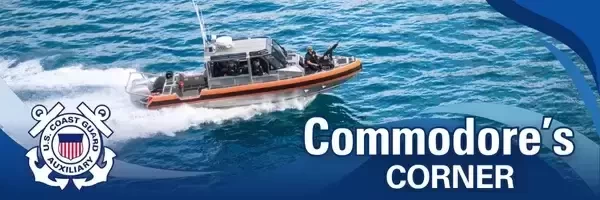
For 1,000 years, Safety at Sea starts at the Dock
So said Admiral Halsey a half century+ ago. It was true then, true before and true forever. And a key to safety of life at sea is a reliable boat under you. And, with the ever increasing reliance on electronics and computers aboard, we need to be sure that our electrical system is ready to go. This starts with preventative maintenance (PM.) I'll admit that I hate PM; as I'm working on something, I'm saying to myself, "the odds on this being a problem are million-to-one!" But I keep working on it because a little voice in my head keeps says, "wanna be that millionth guy?"
I start PM where the boat starts – with the ignition system. For most boats, it is simply a key and a safety-lanyard cut-off key. That is the lanyard that you are supposed to attach to yourself so, if you fall overboard, the boat doesn't keep going down the bay or, worse, spin around until it runs you over. Most boaters don't attach that lanyard to themselves for reasons that become self-evident if you've ever put it on. You reach over to help somebody with something 2' away and the boat stops. (There are electronic ones now that are wireless and let you walk around the boat to your heart's content.)
But what about the guy with an enclosed engine space. Quite likely, there is a solenoid switch down there which is an integral part of the starter system. It is mounted low on the engine, not too far from the bilge. Take a good look at it. If you see any salt on it, it is likely from evaporated seawater that has splashed on it. Think about putting a splash plate under it, to keep the bilge water from giving it a bath in heavy seas. Also, check to see that the terminal nuts are properly tightened. You don't want them working loose. My mechanics will tell you that faulty wiring connections are the most common reason for failure. Take a look at every wiring connection. Nothing wrong with removing them, checking them, then cleaning and refastening. Visually check the cable looms and look for signs of chafe or damage.
Next, take a look at the battery or batteries. Are the cables clean and securely fastened to the battery terminals? They shouldn't have any "white powder" on them (leaking solution from the battery itself is likely the problem and that means it may be time for a new battery.) The cables shouldn't move at all when prodded, even with a good rap with a hammer. If they do move, this can set up a condition of poor connectivity, high resistance and poor starting power.
Any good mechanic will check the battery for voltage. Although a battery may show a voltage of 12 volts when idle, its true test comes during the substantial energy drain experienced during startup. It's at this critical moment—a brief instant as you turn the key—when voltage can momentarily dip. It's crucial to inspect all terminal connections, including the often-overlooked negative post. A poor or loose connection at the negative post can be just as detrimental as any fault at the positive post, potentially preventing the engine from starting entirely.
If the engine doesn't get enough starting power to reach starting RPM, it just won't start. Most of us think, "Ugh! The battery is dead" and move to get a new battery. There are over a dozen places where connections can work loose, almost imperceptibly to the human eye – but not to the electronic components.
If you have questions on this column or you are interested in being part of USCG Forces, email me at JoinUSCGAux@aol.com or go directly to the US Coast Guard Auxiliary "Flotilla Finder" at http://www.cgaux.org/units.php and we will help you "get in this thing."
An Additional Suggestion from the Waterway Guide Community
"Maybe also include in this PM process a check of the "zinc" plates (sacrificial anodes) through-hull and / or on the base of an outboard engine mount. Electrical PM for safety should include comprehensive systems if possible. "Zincs" are simple enough to maintain, and are critical to engine effective useful life and wet area conductivity protection."












